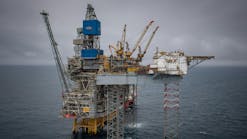The US Department of State's Nov. 10 decision to delay a final recommendation on the proposed Keystone XL crude oil pipeline's cross-border permit application so alternative routes can be considered will create new uncertainties for Canadian heavy oil producers as well as US refiners, an IHS CERA specialist said.
"In the next few years, existing US Midwestern markets for Canadian oil sands will reach the saturation point," Jackie Forrest, oil sands dialogue senior director at IHS CERA, said on Nov. 11. "By 2015, without new pipeline solutions to bring oil sands barrels to markets outside the Midwest (such as the US Gulf Coast), oil sands production growth could stall for lack of new demand."
The State Department said the delay effectively postpones into early 2013 any approval or rejection of TransCanada Corp.'s application, which President Barack Obama previously said he would handle personally. Forrest said it would take about 2 years to build the $7 billion project and put it into service if it's approved.
"However, in the 2 years leading up to the in-service date of the pipeline, oil sands producers would continue to face steeper and steeper price discounts for their crudes, as oil sands production growth will outstrip new demand in existing markets," she said.
Keystone XL's permit delay increases the possibility that other projects to transport oil recovered from Alberta's oil sands to US Gulf Coast refiners will move forward, Forrest continued. The most prominent is Enbridge Inc.'s proposed Wrangler pipeline which, combined with the Calgary company's Flanagan South project and existing Alberta Clipper pipeline, could serve a function similar to Keystone XL's, she said.
Enbridge's plans
In its Nov. 9 report of financial results for the third quarter and 9 months ended Sept. 30, Enbridge said expansion of Enbridge Energy Partners LP's Line 5 and reversal of the segment of Enbridge's Line 9 from Sarnia to Westover, announced in early October, would provide increased access to US Upper Midwest and Ontario refineries Canada for light crude produced in western Canada and the US.
It said Wrangler, which it announced in late September as a proposed joint venture with Enterprise Product Partners, would transport crude from the Cushing, Okla., hub to Texas Gulf Coast refineries. Enbridge is also developing the proposed Flanagan South Project to add capacity to Cushing from its Flanagan, Ill., terminal, Enbridge said.
"Potentially, all legs of this project could be in service by 2014," Forrest said. "Even in this scenario, oil sands producers would face steeper price discounts for their crudes, a full year longer than a scenario where the decision on Keystone XL is not being postponed."
Pipeline capacity also is needed to move light crude produced from North Dakota's Bakken formation and other US Midcontinent tight oil formations, she continued. "Based on our view of growth in Canadian oil sands and tight oil production, over the next 5 years North America will need both the Keystone XL and the Enbridge projects in order to create enough takeaway capacity to prevent bottlenecks," Forrest said.
"If no pipeline solutions occur in the next few years, we are likely to see a very significant build out of rail capacity, which has higher transportation cost than pipelines, to bring Canadian oil sands and Midcontinent tight oil to new markets," she added.
More Oil & Gas Journal Current Issue Articles
More Oil & Gas Journal Archives Issue Articles
View Oil and Gas Articles on PennEnergy.com

Nick Snow
NICK SNOW covered oil and gas in Washington for more than 30 years. He worked in several capacities for The Oil Daily and was founding editor of Petroleum Finance Week before joining OGJ as its Washington correspondent in September 2005 and becoming its full-time Washington editor in October 2007. He retired from OGJ in January 2020.

